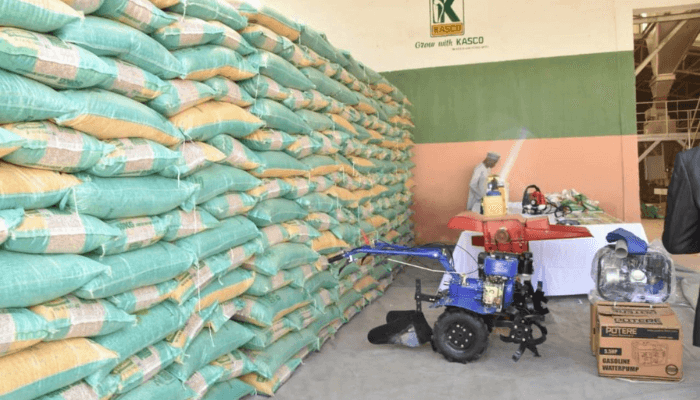Nigeria’s state corporations often survive on budgetary lifelines, as most government-owned firms either operate at a loss or depend on subsidies to stay afloat, making the Kano Agricultural Supply Company’s recent handover of ₦200.4 million to the state treasury a notable departure from the norm. The amount represents 60% of its 2024 profit.
After years of operational decline, KASCO returned ₦334 million in earnings and became the first Kano-owned enterprise in over a decade to remit a surplus to government coffers.
On its own, the figure will not rebalance the books of Africa’s most populous nation, but multiplied across hundreds of public firms, this quiet reversal could mean a lighter debt-service burden.
Why profitable state enterprises matter
Profit-making state enterprises are fiscal multipliers. Each dividend remitted swells non-tax revenue, trims budget deficits, and reduces the need for inflation-fuelled borrowing.
Nigeria’s debt now hovers near 40% of GDP, and servicing it devours almost 80% of all public income. Regular contributions from just a fraction of SOEs could create fiscal breathing space worth 0.5% of GDP. This sum could restore funding to the classrooms and hospitals long squeezed by debt obligations.
Around the world, a few governments have learnt to make their state-owned firms pay and keep them profitable without bleeding them dry. Botswana and Chile offer striking examples of how state-owned enterprises can thrive without draining public coffers.
In Botswana, disciplined management and joint-venture models such as Debswana, the diamond-mining partnership with De Beers, have made parastatals major fiscal contributors: diamonds alone account for roughly 30% of GDP and over half of government revenue.
Chile’s Codelco, the world’s largest copper producer, similarly added $ 1.3 billion in 2021 to the national treasury while maintaining operational independence and audited transparency.
Both countries treat their SOEs as commercial entities with public shareholders, enforcing clear dividend rules and professional governance. The result is state capitalism that funds budgets, stabilises economies, and, unlike in many African systems, reduces rather than deepens fiscal dependence.
Lessons closer to home
Malaysia’s Petronas is a well-known entity whose profits fund budgets and reserves. Even within Africa, reforming dividend policies has proven transformative.
Rwanda’s National Agricultural Export Board, restructured under performance contracts, now remits predictable profits that support agricultural research. Kenya’s energy regulator requires annual remittances from parastatals into a consolidated revenue fund, helping stabilise sectoral finances.
The common thread is rule-based governance. Countries that legislate clear dividend frameworks tend to achieve both fiscal discipline and commercial viability. Where such frameworks are missing, SOEs alternate between feast and famine: windfalls one year, bailouts the next.
When remitted profits are prudently managed, they can finance the kind of capital spending that drives long-term growth: farm-to-market roads, extension services, or small-scale irrigation.
Financially, it also stabilises local credit markets. Governments that rely less on overdrafts or bond issues leave more liquidity for private borrowers, lowering interest rates and improving business confidence.
The caution is that sustainability must not be sacrificed for short-term optics. Profits built on deferred maintenance or price hikes that squeeze farmers will not last.
Neither will fiscal gains that disappear into untracked recurrent spending. Transparency, independent audits, and performance contracts are crucial to ensure that remittances reflect genuine efficiency.
Replicating Kano’s success
Turning a single success into national policy demands deliberate reform. The first step is to codify clear dividend rules, requiring all profitable state enterprises to remit at least half of their surplus each year, subject to independent audits. Such predictability turns ad hoc payments into a steady, budgetable stream of non-tax revenue.
Proceeds should then be ring-fenced for productive use, channelled into debt reduction, infrastructure, or capital investment rather than routine consumption. When revenues from state firms are preserved for growth-oriented spending, the gains extend beyond fiscal balance sheets to the wider economy.
Replicating performance-based management structures across the state-enterprise landscape would reinforce this cycle. Governments that professionalise boards, publish financial statements, and benchmark returns often see durable improvements in profitability and accountability.
Summary not available at this time.






